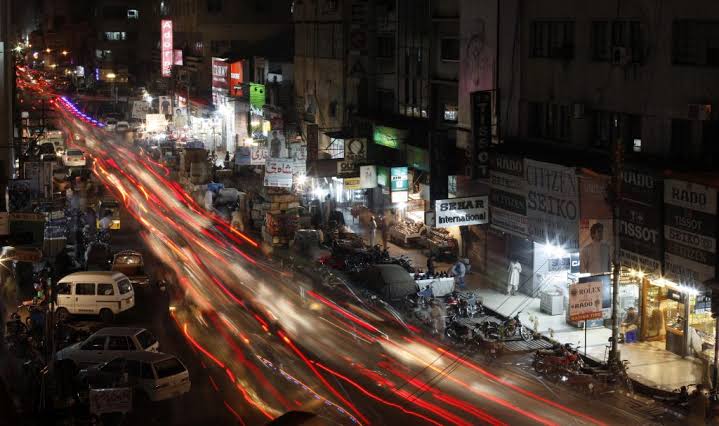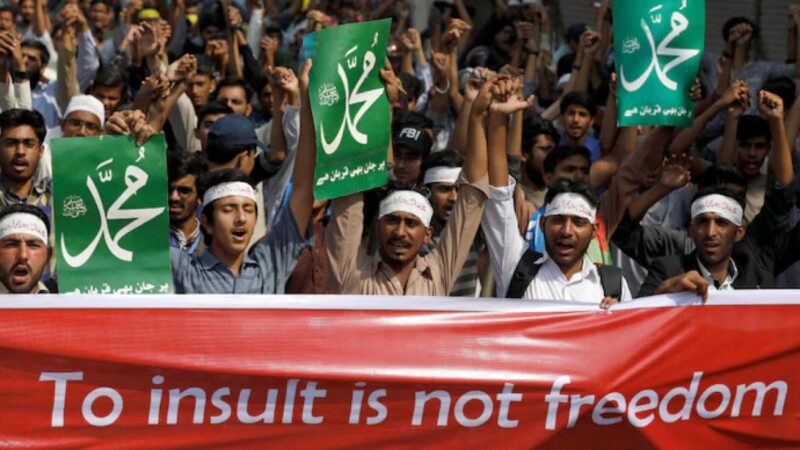Ninth Review of IMF Bailout: Tough Times Ahead for Pakistan

With bankruptcy looming around, Pakistan is seeking a USD 7 billion bailout package from the IMF to prevent the collapse of the economy. While the visiting IMF delegation is asking for several reforms and compliance to its conditionality, tough times are ahead for Pakistan. But many analysts believe that the current economic crisis in Pakistan is a culmination of decades of its faulty policies. This is clear from the resource allocation pattern in Pakistan from one budget to another which puts disproportionate focus on populism and militarisation. This has put additional burden on its exchequer leading to unsustainable fiscal gap.
The IMF mission, led by Nathan Porter, began talks on January 31 with the Pakistan government represented by Finance Minister Ishaq Dar for the ninth review of the assistance package. PM Sharif, while addressing an apex committee meeting in Peshawar following Monday’s mosque bombing that killed over 100 people, said, “As I speak, the IMF delegation is in Islamabad and they are giving Finance Minister Ishaq Dar and his team a tough time.”
Pakistan Prime Minister Shehbaz Sharif said on February 3 that the International Monetary Fund (IMF) was giving a “tough time” to his country over restoration of stalled bailout package at a time of “unimaginable” crisis. Shehbaz Sharif admitted that the country has no option but to accept the IMF conditionality. “You all know we are running short of resources,” Sharif said, adding the country was “facing an acute economic crisis”.
Hours after his remark, the Pakistani rupee, which has been in a steep slide since last week, hit a record low against the US dollar. The Pakistani rupee fell by 1.9% to a record low of 276.58 per dollar in the inter-bank market the same day, according to the Central Bank.
As the IMF bailout package is conditional on Pakistan implementing IMF suggested measures, its release would require Islamabad to take tough decisions. After the first round of technical talks between the IMF team and the government concluded on February 4, Pak Prime Minister observed that the lender was imposing conditions that were “beyond our wildest dreams”.
The four-day talks were held in Islamabad with representatives from more than seven departments present, to identify major fiscal gaps and discuss ways to plug them. The discussions covered details of expenditure and revenue performance to identify the policy measures- both revenue and non-revenue- that would have to be taken over the next four months of the current fiscal year. The Pak Prime Ministered, despite calling the IMF conditionality as unimaginable acknowledged that the country had no choice but to implement the conditions. It has been seen that Islamabad has a policy obduracy and inertia that prohibit it to shun its populist policies and take reform measures on debt, fiscal, trade and structural fronts to address its economic woes.
Analysts opine that the rocky road Pakistan is passing through is its own creation. In the first instance debt dependent growth strategy is itself a sure recipe to fall into a debt trap, especially when industrial growth and diversification is limited and exports basket primarily made up of primary goods. The debt dependence has also eroded the sovereignty of Pakistan and the country’s economic and foreign policies are dictated by those who provide funds. Such dependence on external funding has impeded the structural transformation of the Pak economy and its indigenous growth impetus.
Secondly, an artificially designed threat perception in Pakistan created by the vested interests in Islamabad’s establishment has totally distorted the allocation of resources in the country giving undue emphasis on militarisation in the name of preparing for a threat that does not exist. In the process, the ruling elite of the country not only indulged in corrupt practices while procuring arms and ammunitions and state-of- the art equipment including fighter planes, but also emptied the state coffers which eventually crippled development of the country and welfare of the people.
The third most remarkable flaw in Pakistan’s economic policy is a deliberate and foolhardy choice of missing the development opportunities generated by free trade. While Pakistan has a good location to leverage the presence of two giant economies in its neighbourhood, it has opted to isolate one of them and sided with the other at the cost of huge losses in trade creation. Not giving the Most Favoured Nation status to India and keeping the trade routes closed for direct trade is a self defeating proposition.
By opening the direct trade routes and facilitating smooth transit could generate lot of income and employment apart from boosting government’s revenues. But a deliberately designed policy to obstruct the West Asian and Central Asian countries from expanding their trade relations with India through territorial routes leads to immense economic loss to Pakistan. Nobody gains from such an exclusionary trade policy and it is against the spirit of free trade advocated by the World Trade Organisation.
Many observers and think tanks have already pointed out the consequences of a debt dependent growth strategy. A report of the Asian Lite quoted a statement issued by rating agency Moody’s which highlighted “country’s ability to afford its own debt is one of the weakest among the sovereigns.” It said that the debt servicing obligations of Pakistan stand at USD 15.5 billion in 2023 and claimed that the interest payment obligation of Pakistan alone is half the country’s revenue this year which is 25 per cent higher than in 2022. The external debt of the country rose from USD 66 billion in FY 2017 to over USD 100 billion today. It is utter mismanagement of economy and a text book case of wrong policies and priorities, especially debt dependence.
The Asian Lite also cited United Nations Development Programme (UNDP) report, which said that Pakistan is facing an accumulated debt of over USD 250 billion, much more than the carrying capacity of the Pakistani state, wherein it has to pay back a debt of USD 33 billion by 2023. The continued slump of the Pakistani Rupee (PKR), reaching a record low of 267.48 per dollar, is further worsening the crisis.
Explaining the causes of the deteriorating economic conditions of Pakistan the report by Asian Lite pointed out that the crisis in Pakistan worsened due to a combination of many factors including its faltering GDP growth, global economic slowdown, rising global inflation owing to the Ukraine war, plunging Pakistani rupee making imports costlier, compounded by a catastrophic flood which caused massive destruction affecting over 33 million people.
In the fund’s eyes, the major threat to the economy comes from the poor performance of the power sector, whose circular debt has reached PKR 2.9 trillion, which needs sincere measures. This may include the discontinuation of power subsidy currently being given to export oriented industries. IMF is aware about deformities in Pakistan’s power subsidy, and, therefore, the analysts say that the IMF not only wants the bulk of circular debt eliminated , but also seeking way to stop it from piling up again.
IMF reportedly also talked about privatisation of loss-making state-owned enterprises, but the finer points still remain to be hammered out. Another of the Fund’s major demands is raising the petroleum development levy on diesel to PKR 50 from the current PKR 40 per litre. Such an increase would further fuel inflation and put a downward pressure on the value of PKR. Negotiations of IMF team with the Pak authorities would also explore in coming days the quantum of additional tax and non-tax measures. The IMF measures intend Pakistan to realise a “positive primary balance.” Another demand of the Fund is the restoration of unrestricted imports. Currently, more than 9,000 containers are stranded at the country’s ports as letters of credit are not being opened.
Islamabad could no more avoid taking hard decisions. The situation continues to deteriorate. With only around USD 3.10 billion in foreign exchange reserves, which can only cover 18 days’ worth of imports, and shortage of basic goods including food and medicine and ever spiralling inflation, the choice to comply with the IMF conditionality would not be easy for Pakistan. In view of the desperate situation facing the country Pak government has no option but to accept the IMF conditionality which they earlier resisted in the hope that their traditional development partners would go extra mile to help their battered economy. But it did not happen. Islamabad has to accept the IMF conditionality if it intends to keep its economy afloat and avert a collapse. Even if it is hard, this is the only option now.






